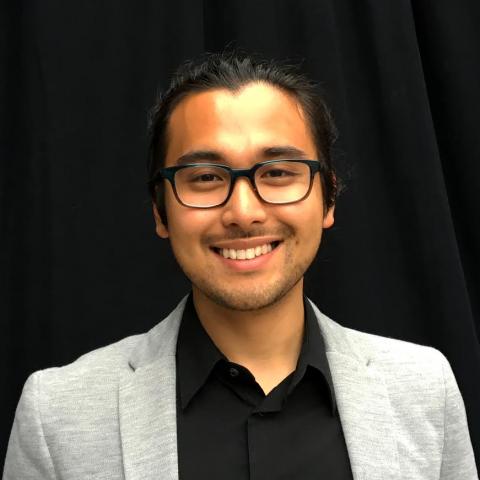Frederick Sachs
Distinguished Professor
University of Buffalo, Department of Physiology and Biophysics
Seminar Information

Cells have three sources of free energy to conduct their ritual affairs: chemical, electrical and mechanical potential and life involves the flow of energy among these pools. Knowledge of no single energy pool is sufficient to tell the tale since the pools interact. Knowing all DNA sequences will never tell you how to build a cell, any more than the periodic table will tell you how to build a Ferrari.
I was trained in electrophysiology so needless to say I thought the membrane was everything. When we discovered mechanosensitive ion channels, I thought we were done. Those channels do exist and the primary sequences are known for some of them such as PIEZO1 and TREK-1, and the 3D structures for some bacterial versions. There is no sequence homology amongst the channels so mechanical sensitivity appears to be a more global phenomenon that is associated with open states being physically larger than closed states. A tricky problem for us experimentalists studying these channels is that no one knows the actual stimulus. Forces in the cortex are shared by many different structures including the bilayer to the extracellular matrix and the cytoskeleton, so what does a channel feel? Good question. Adding to the problem is that we know that the channels are in distinct spatial domains so that the tension within a domain cannot be the same as that outside.
To examine the distribution of forces in cells, we designed and built genetically coded FRET probes that report tension in the targeted proteins. Guess what; stresses in a cell are not uniform in space or time (a hard for the modelers). The probes are nontoxic and we have been able to make cell lines and transgenic animals that express the probes. Some of the interesting probe probe observations include:
- Osmotic stress is not concentrated in the cell membrane but distributed throughout the cytoplasm – poroelasticity. Time to rethink cell volume regulation.
- The stresses in structural proteins can vary in space as well as in time.
- Cytoskeletal reagents such as colchicine and cytochalasins affect the stress in proteins other than their presumed targets – what if your reaction was driven by filamin?
- Stemness appears to be associated with increased stress in actin and actinin.
Despite these crevices in the dogma, we are applying cell mechanics to the clinic. The primary goal is to treat muscular dystrophy by inhibiting mechanosensitive ion channels, and then to treat infarcts and arrhythmias. Since every disease involves some changes in cell shape, they must also involve changes in force. That limits us to an infinite number of targets.
My interests center on mechanical and electrical biophysics, from molecules to organs, and the development of new tools. And, in recent years I worked in transitional science; bringing basic science to the clinic and to industry. My basic research interests are on cell mechanics and the mechanisms by which mechanical forces are transduced into messages such as voltage and chemicals such as ATP and Ca2+. I discovered mechanosensitive ion channels in 1983. My methodology has included patch clamp, high resolution bright field light microscopy, low light fluorescence microscopy, high speed digital imaging, TIRF, digital image analysis, high voltage EM with tomography, Atomic Force Microscopy, molecular biology, natural product and recombinant protein biochemistry, NMR and microfabrication and microfluidics. We discovered the only known specific inhibitor of mechanosensitive ion channels and uncovered its remarkable mode action by using a combination of electrophysiology and chiral chemistry. We have demonstrated potential clinical applications of the peptide for cardiac arrhythmias, oncology, muscular dystrophy, and incontinence.
We have developed many scientific tools. Recently we developed a sensor chip to measure cell volume in real time, and that is in beta test with Reichert Instruments of Buffalo. We also developed a bipolar temperature jump chip with ALA Scientific and with KBTwist of Buffalo a microfabricated Atomic Force Microscopy probe that is an order of magnitude faster and more stable than any commercial probes. We have used the Atomic Force Microscope combined with electrophysiology to study the dynamics of single voltage dependent ion channels at a resolution of >0.01nm in a kHz bandwidth. We developed other hardware including the first automated microelectrode puller, a micron sized thermometer and heater and a high speed pressure servo. Some of these devices have been patented by the University of Buffalo and some are in current production. We have invented genetically encoded molecular probes to report stress in cytoskeletal fibers. This data is available in real time and we have made transgenic animals encoding these sensors.
We recently set up a biotech firm called Tonus Therapeutics to develop a peptide inhibitor of mechanosensitive ion channels as a therapy for muscular dystrophy. With support from the DOD we have begun basic science studies of the role of mechanical stresses in initiating pain responses.
To analyze the reaction kinetics of single molecules, we developed and made publicly available (www.qub.buffalo.edu) a complete software package for Windows that does data acquisition and Markov kinetic analysis. This work was funded by the National Science Foundation, National Institutes of Health and the Keck Foundation over the last fifteen years, and the software has been applied to ion channels, molecular motors and the even the sleep patterns of mice. We have taught at UB a hands-on course to use the software, and the course was attended by an international group of academic scientists and students, government and industry.
I have served on the editorial board of the Biophysical Journal and served two terms as a member of the Council of the Biophysical Society, and two years as a member of the Executive Board and am a member of the publication Committee. I have taught the biophysics of ion channels, quantitative biology, neurophysiology, and clinical biophysics and pharmacology. I am director of the University of Buffalo Keck Center for Biomedical Computing and co-Director of the Center for Single Molecule Biophysics.
